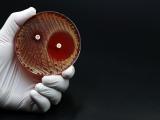Jan 23, 2013
Study: Relatives of novel coronavrius common in bats
Coronaviruses related to the novel corornavirus that infected nine people in the Middle East last year are fairly common in African and European bats, a finding that strengthens the evidence that the new virus originated in bats, according to a report published yesterday in Emerging Infectious Diseases. Previous studies have shown that the new human virus, called EMC/2012, is closely related to viruses found in certain bat species. In the new study, an international team looked for evidence of betacoronaviruses in fecal samples from 4,758 bats from Ghana and 272 bats from four European countries. They found viruses related to EMC/2012 in 46 (24.9%) of 185 Nycteris bats and 40 (14.7%) Pipistrellus bats. "Their genetic relatedness indicated EMC/2012 originated in bats," the report says. The authors note that bats were identified as the likely source of the coronavirus that caused the SARS (severe acute respiratory syndrome) epidemic in 2002 and 2003. They say the new data suggest that EMC/2012, like the SARS coronavirus, might be another human coronavirus for which an animal reservoir of closely related viruses could exist in Old World insectivorous bats. The researchers also comment that African practices such as using bat guano as fertilizer and hunting bats may help coronaviruses jump from bats to humans.
Jan 22 Emerg Infect Dis report
Related Nov 20, 2012, CIDRAP News story
Meta-analysis finds 2.7% MRSA nasal carriage rate in kids
A meta-analysis found that 2.7% of children had nasal carriage of methicillin-resistant Staphylococcus aureus (MRSA), with rates about twice as high in children with underlying conditions and in hospitalized kids, according to a report in The Pediatric Infectious Disease Journal. The investigators reviewed 544 studies from January 2000 through August 2010 from Medline and selected 50. They estimated MRSA nasal carriage prevalence of 2.7% overall, compared with 5.2% in children with underlying conditions, 5.4% in hospitalized children, and 3% in children recruited from the community. The authors conclude, "The hospital remains the environment where the microorganism circulates most."
Jan 22 Ped Infect Dis J abstract
More recent E coli O104 isolates closely related to 2011 outbreak strains in Europe
Escherichia coli O104:H4 bacteria that have caused isolated illnesses in Europe after a huge 2011 outbreak linked to sprouts are not the outbreak strain but are very closely related and share the same disease-causing genes, say researchers who conducted a genomic analysis reported yesterday in mBio. A team of US and French scientists analyzed the genomes of isolates from five E coli O104:H4 cases in France and Turkey that occurred after the outbreak was over and caused hemolytic uremic syndrome, a potentially fatal kidney complication. The researchers write, "These analyses revealed that the five isolates are not derived from the outbreak strain; however, they are more closely related to the outbreak strain and each other than to isolates identified prior to the 2011 outbreak." The finding that the isolates contain the same disease-causing genes as the outbreak strain points up "the concern that these bacteria may cause future severe outbreaks."
Jan 22 mBio report














